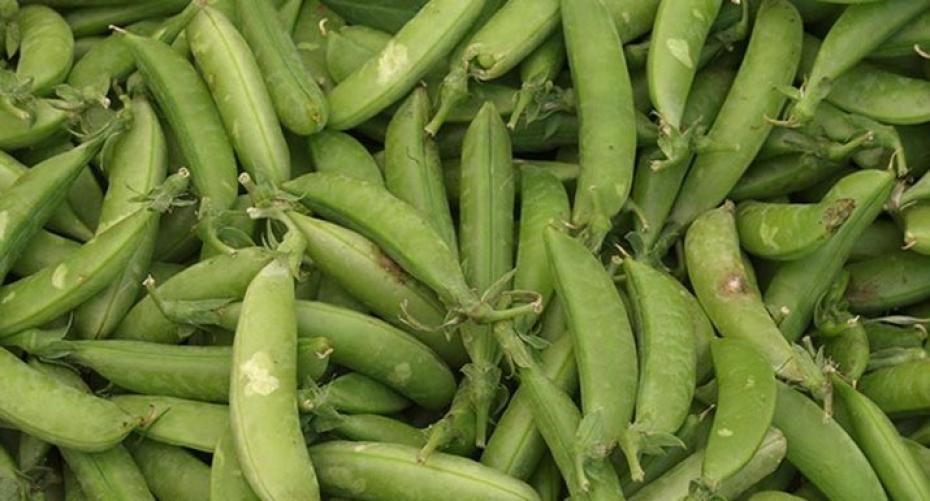Peas and beans are easy to grow, nutritious and come in a huge range.
Peas and beans belong to the family of legumes which also include lentils, clover, lupins, peanuts and wisteria. They have a unique ability to fix nitrogen in the soil through nodules on the roots. They are one of the best sources of plant protein.
Which variety to choose
Decide how much space you have available and then decide which variety to grow. Beans are available as runners; which need to be supported as they grow tall (approximately 210cm, 7’). They are usually planted either in a row or in a wigwam shape. These are usually fairly heavy croppers. Small bush varieties of French beans are available which will happily grow in a pot and do not need any support. Crops are smaller than the runner types. Peas also come in a variety of sizes from the traditional types which grow up pea sticks to the small sugar snaps and mangetout. There is a huge range on sale in garden centres with planting and harvesting information on the packets.
Site
They must be grown in a sunny aspect, at least 6hrs of sunshine every day. They need a well -drained fertile soil. When planting dig a trench and put a fork full of well-rotted farmyard manure in the bottom. This will hold onto the moisture, as they need a constant supply of water in order to grow to their full potential and fill the pods.
Sowing
They can be sown directly into the soil or started off earlier sown in pots and placed in a cold greenhouse. Broad bean Aquadulce Claudia and pea Douce Provence have been bred to cope with cold temperatures and so can be sown over winter; either in pots in the greenhouse in cold areas or directly into the soil in milder areas. In mild areas the pea Oregon Sugar Pod can be grown under a cloche. The advantage of sowing in winter is they are ready to harvest in May, a couple of months sooner than other varieties. Regular varieties can be sown in early spring and germinated in a greenhouse. Sow 3 seeds to a 9cm (3in) pot in good seed compost. When germinated pull out the 2 weaker seedlings, as leaving all 3 will compete for nutrients and lead to smaller crops.
Stagger the sowings, leaving 2 weeks between each sowing to ensure a regular supply and not a glut.
If sowing directly into the soil wait until soil temperatures reach 16C (60F) for beans, usually in mid-May and 10C (50F) for peas, usually from mid-April. Plant approximately 30cm (1’) apart and 5cm (2”) deep. Small bush varieties can be grown in 25cm (10”) pots, one plant to a pot. Rake the ground and remove any stones prior to sowing, water seeds in with a rose on the watering can. Always water seedlings with a fine spray otherwise they can be washed out. They will need watering daily in dry weather.
Growing
Put in plant supports, such as canes, netting or pea-sticks when sowing the seeds or transplanting the seedlings. They may need winding round the supports when young and checking regularly to ensure they are still climbing. To aid pollination try growing companion plants, such as sweet peas, which attract pollinators. Don’t forget to give them plenty of water.

Peas growing up pea sticks
 Harvesting
Harvesting
Pea and broad bean tops can be harvested; peas shoots when approximately 15cm (6”) tall and broad bean tops when they have set a crop, this also deters black fly. Harvest when small and sweet; as they can become tough and bitter if left too long. If you wish to save seed for next year leave pods on the plant, let them fill until they split and the stem starts to wither. Pick and put the pulses in a cool dry place, when dry package in a paper bag and store in a cool dry place and use as seed for next year.
Pests and Diseases
Black fly is a problem for broad beans but can be alleviated by picking out the tops when the crop has set.
Powdery mildew can be a problem; spraying with a fungicide designed for edible crops at the first sign can be effective. If the problem is widespread the only solution is to pull up the plants and burn them, do not put on the compost heap as this will only spread the disease. Grow peas and beans in a different area of the vegetable plot next year. This is a good reason for practising crop rotation.
Aphids and whitefly can be a problem, companion planting can entice the insects from the crop. Otherwise wash off with a mild solution of washing-up liquid and water or use a systemic insecticide, making sure that it is formulated for edible crops.
Mice can be a problem when sowing directly into the ground so cover with a fine strong mesh or holly leaves. Pigeons can also be partial to young shoots so it may be necessary to cover the plants with netting until they are fairly well established.


